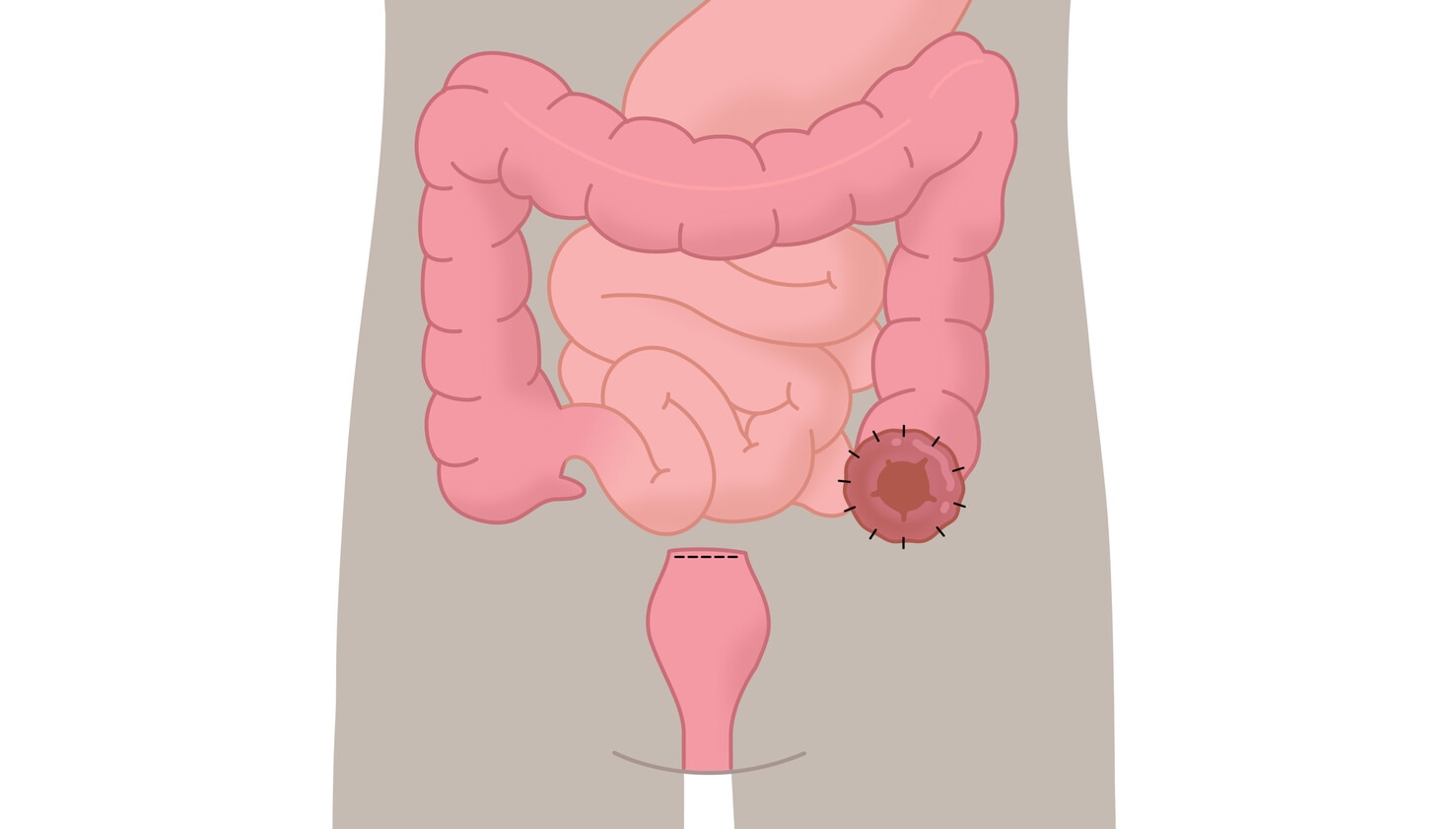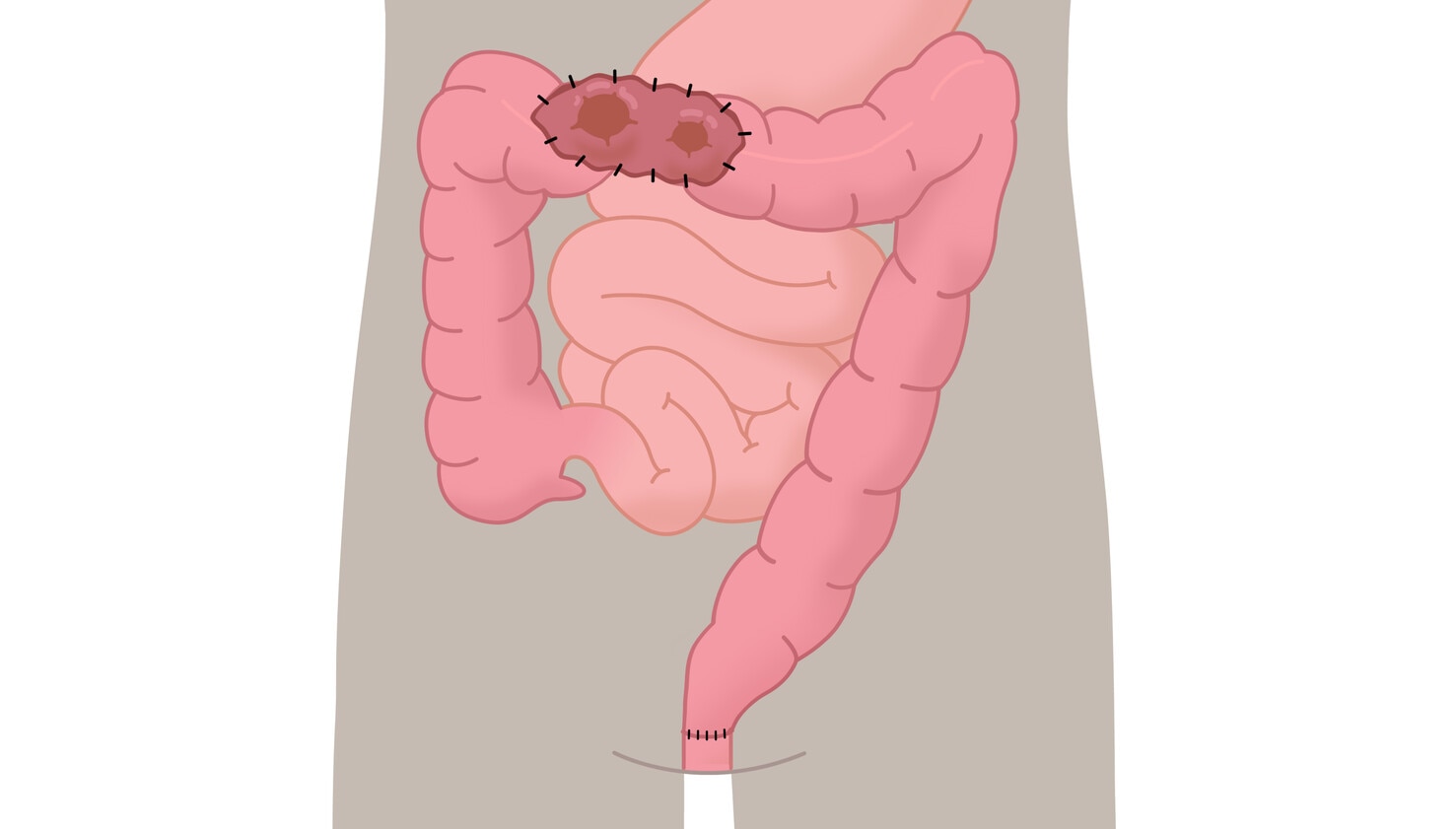What is a colostomy?
How a Colostomy is usually formed
In a colostomy operation, part of your large bowel (colon) is brought to the surface of your abdomen to form a stoma (opening). A colostomy is usually made on the left-hand side of your abdomen but may in some circumstances be on the right-hand side. When a colostomy is made on your abdomen it alters the usual way you go to the toilet to pass faeces. Instead of coming out through your anus, your faeces will pass through the stoma. The passing of faeces is usually controlled by a special sphincter muscle in the anus. However, the main difference for you when you have a stoma is that you are no longer able to hold on to or have control over when you need to pass faeces. You also do not have any control over when you pass wind or flatus.

What is an end colostomy?
The most common kind of colostomy is an end colostomy, where the end of the colon (large intestine) is brought out onto the surface of your abdomen and then stitched to the skin creating an opening called a stoma.
An end colostomy can be either permanent or temporary
A temporary colostomy is typically used in situations where the diseased part of the intestine has either been removed or needs to rest before the large intestine can be re-joined together.
The permanent solution is chosen in situations where it is too risky or not possible to re-join the two parts of the intestine.

What is a loop colostomy?
In a loop colostomy, a loop of the bowel is brought out above skin level. An incision is made halfway through the large bowel to create two openings. This is then rolled back on itself and sewn onto the skin forming the stoma.
The loop colostomy is typically a temporary measure performed in acute situations. It can also be carried out to protect a surgical join in the bowel.

